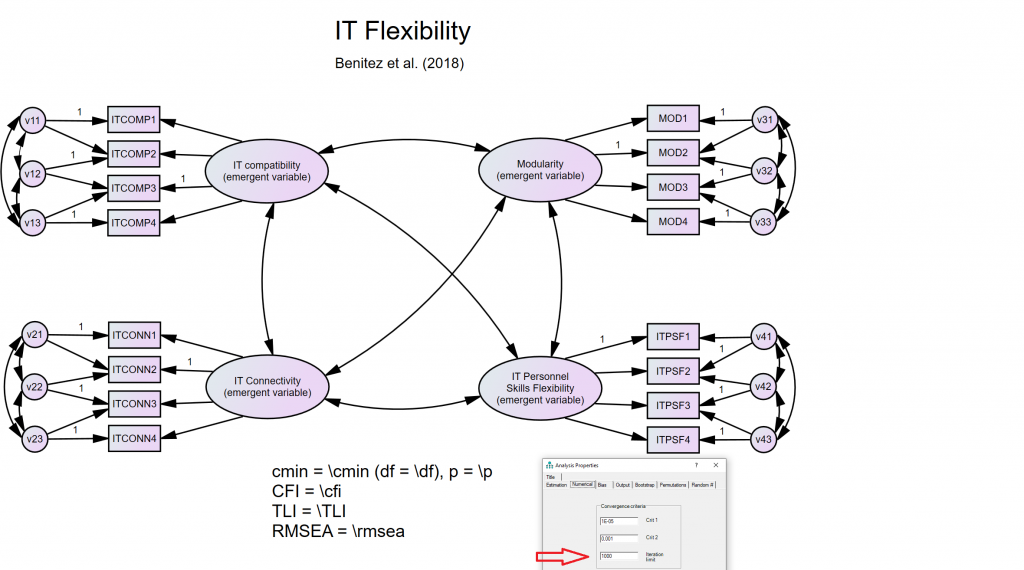This tutorial executes the CCA as described in Benitez et al. (2018) using SPSS Amos. SPSS Amos is a proprietary software for covariance-based structural equation modeling. It can be obtained from https://www.ibm.com/products/structural-equation-modeling-sem
In order to specify composite models in SPSS Amos, analysts can rely on the Henseler–Ogasawara specification (Schuberth, 2022; Henseler & Schuberth, 2021), i.e., they must specify emergent variables and excrescent variables.
SPSS Amos does not know the variable category “emergent variable”, so one cannot draw hexagons. Instead, emergent variables must be drawn as ovals, just like latent variables. The four emergent variables in our example model are emergent variables (despite their shape and the orientation of the arrows) because the observed variables do not have uniquenesses. Since each set of four observed variables is explained by four variables (i.e., one emergent and three excrescent variables), the emergent variables are linear combinations of the observed variables. The weights for the observed variables can be obtained by inverting the matrix of loadings, see Schuberth (2022) and Henseler & Schuberth (2021)
The data and project files can be downloaded here:

References:
Benitez, J., Ray, G., & Henseler, J. (2018). Impact of information technology infrastructure flexibility on mergers and acquisitions. MIS Quarterly, 42(1), 25–43, https://doi.org/10.25300/MISQ/2018/13245.
Henseler, J., & Schuberth, F. (2021). Confirmatory composite analysis. In J. Henseler (Ed.), Composite-based Structural Equation Modeling: Analyzing Latent and Emergent Variables (pp. 179–201). The Guilford Press.
Schuberth, F. (2022). The Henseler–Ogasawara specification of composites in structural equation modeling: A tutorial. Psychological Methods, in press, https://doi.org/10.1037/met0000432